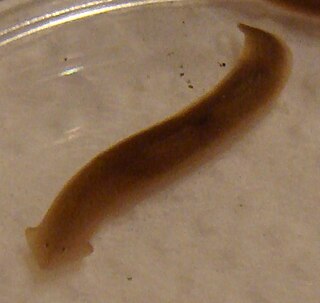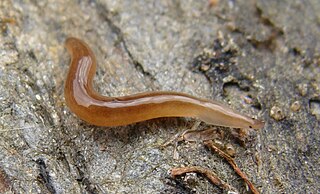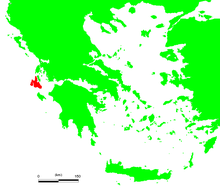
A planarian is one of many flatworms of the traditional class Turbellaria. It usually describes free-living flatworms of the order Tricladida (triclads), although this common name is also used for a wide number of free-living platyhelminthes. Planaria are common to many parts of the world, living in both saltwater and freshwater ponds and rivers. Some species are terrestrial and are found under logs, in or on the soil, and on plants in humid areas.

Dugesia is a genus of dugesiid triclads that contains some common representatives of the class Turbellaria. These common flatworms are found in freshwater habitats of Africa, Europe, Middle East, Asia, and Australia. Dugesia is best known to non-specialists because of its regeneration capacities.

Geoplanidae is a family of flatworms known commonly as land planarians or land flatworms.

Dugesiidae is a family of freshwater planarians distributed worldwide. The type genus is Dugesia Girard, 1850.

Girardia is a genus of freshwater planarians belonging to the family Dugesiidae.

Schmidtea is a freshwater triclad genus widely used in regeneration and developmental studies.
Dugesia notogaea is a species of dugesiid triclad that inhabits freshwater bodies of north Queensland, Australia.
Dugesia tubqalis is a species of dugesiid triclad that inhabits springs of Morocco, Africa. It's named after the Toubkal peak, the highest in the Atlas Mountains. It has been found between 1,702 and 2,164 m of altitude.
Dugesia sicula is a species of dugesiid triclad that lives in freshwater bodies of the Mediterranean Basin, where it is widely distributed. It has been reported from Sicily, Elba and Mallorca, Eivissa, Sardinia, Algeria, Tunisia, Morocco and Crete.

Dugesia sagitta is a species of dugesiid triclad that inhabits the rivers of Corfu, Greece. The specimens of this species are up to 10 millimetres (0.39 in) long and 3 millimetres (0.12 in) wide.
Cura is a genus of freshwater flatworm (triclad) belonging to the family Dugesiidae.
Neppia is a genus of dugesiid triclad that is found in South America, Subantarctic region, Africa, Tasmania and New Zealand.

Dugesia artesiana is a species of dugesiid triclad found in Queensland, Australia.
Dugesia hepta is a species of freshwater triclad endemic to Sardinia.

Dugesia arcadia is a species of freshwater dugesiid found in northern Peloponnese, Greece.

Geoplaninae is a subfamily of land planarians endemic to the Neotropical region.

The reproductive system of planarians is broadly similar among different families, although the associated structures can vary in complexity.

Dugesia subtentaculata is a species of planarian that inhabits the freshwater of Southern France, several localities on the Iberian Peninsula, Mallorca, Morocco and Algeria.

Rhynchodeminae is a subfamily of land planarians with a worldwide distribution.

Imbira guaiana is a species of Brazilian land planarian in the subfamily Geoplaninae. It is the type species of the genus Imbira.












